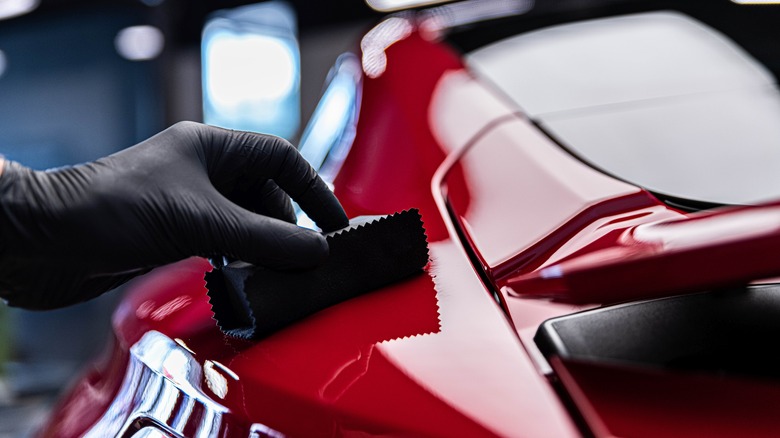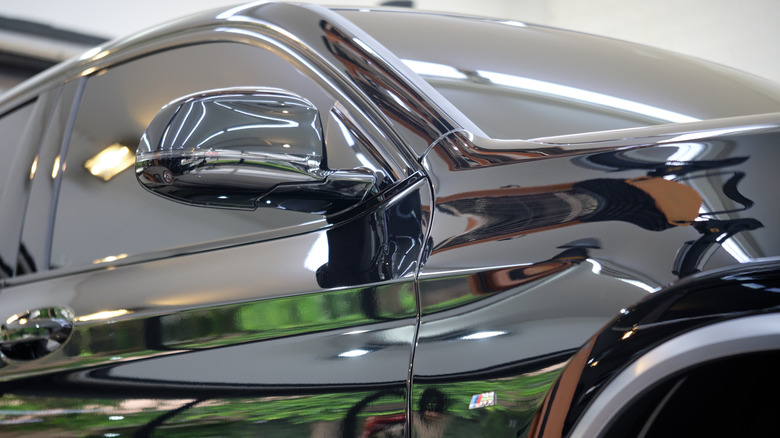How Does Ceramic Coat Actually Work To Protect Your Car's Paint?
Although cars are primarily machines meant to transport us from place to another, we do take pride in these vehicles. Cars are not inexpensive items, and when we go out in the world, we like to show the world that we take care of our machines. Just as we dress up to make a certain impression, the look of our car expresses our identity. This is not just a matter of cleanliness — though keeping a car clean is certainly important — but how well we care for the condition of the aesthetic elements of the car.
Riding around in a car with paint that has faded from frequent exposure to the sun or been damaged by particularly hard rainstorms isn't exactly making the most of the exterior beauty of your car, and if there's a way to prevent or minimize these weatherly effects, plenty of people would be interested in doing those things. Many car owners maintain the paint on their cars with waxing, which they have to do every few months to make sure their car is protected. However, there is a more lasting solution for making sure your vehicle's paint job stays as pristine as possible: ceramic coating.
Applying a ceramic coat to your vehicle could mean preserving the luster and condition of your car's paint not just for several months but for several years if done properly. How you get this ceramic coating done can make a large impact on its effectiveness.
A liquid polymer shield
You may see the word "ceramic" and think this might be covering your vehicle in pottery, but no need to worry about that. Ceramic coating your vehicle means applying a liquid polymer, primarily made of silicon dioxide, to your car's exterior, which essentially forms of clear layer of protection around your car from various environmental elements like rain and dust. Unlike waxing, ceramic coats are a somewhat permanent application and have the potential to be effective on your vehicle for many years.
The reason behind the use of silicon dioxide in ceramic coating has to do with its ability to reach the highest verifiable hardness rating, 9H. However, this hardness factor does not affect the color or sleekness of the vehicle in return. There are other methods for coating your car, such as using silicon carbide or graphene, but silicon dioxide will be the most readily accessible and probably most effective.
Ceramic coatings don't mean your car can't incur damage. The finish can still be scratched, color could fade from sun exposure, but much of the minimal wear and tear your car goes through on a daily basis can be greatly minimized. Ceramic coating can be done at home with the purchase of various available coating liquids, but bringing your vehicle to a professional for coating is probably the best way of both coating your vehicle without any user issues and getting a coat that will last a very long time.

